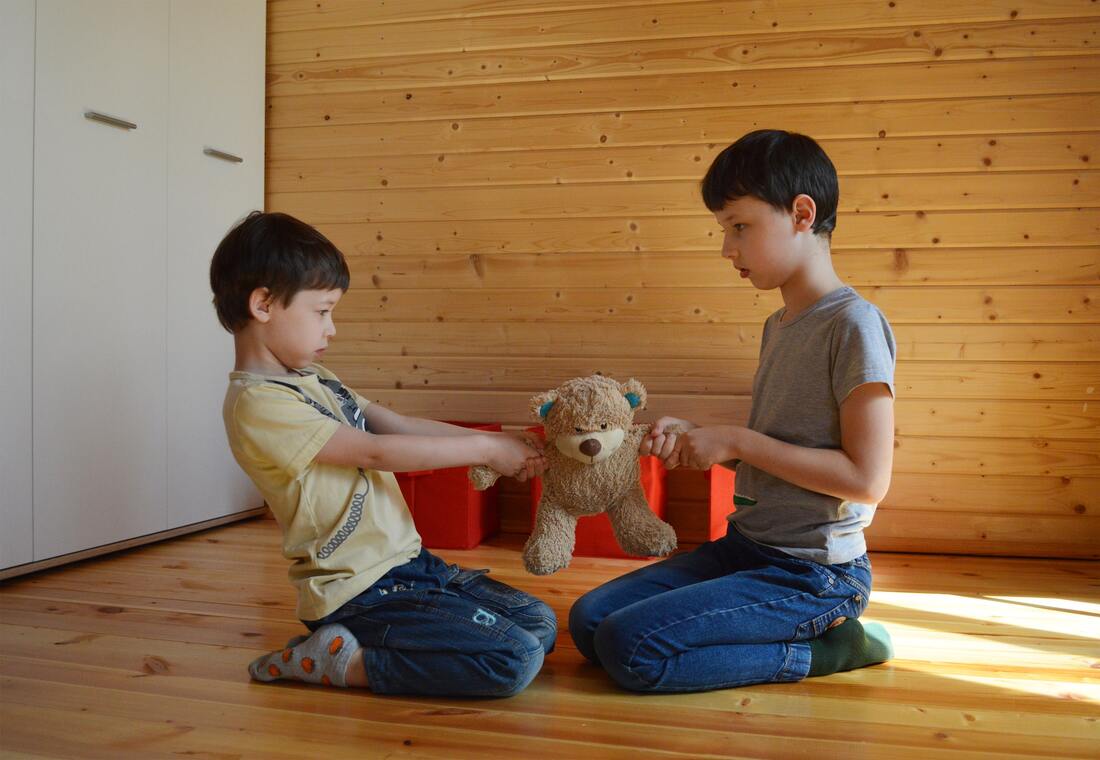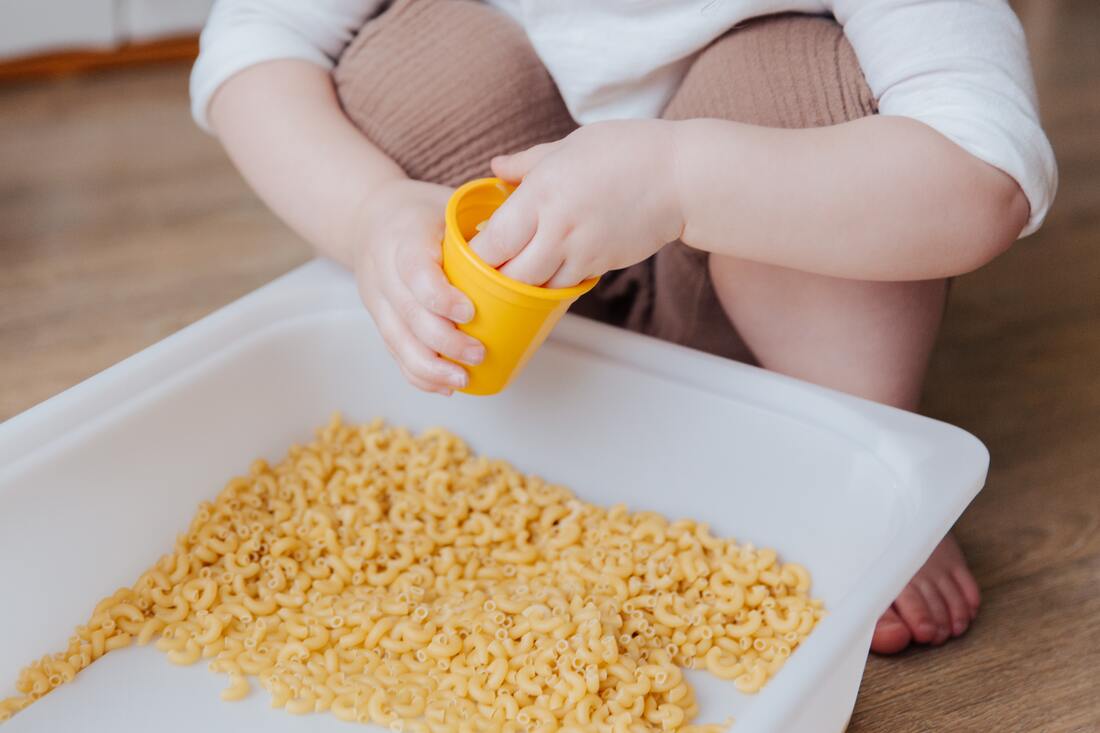Kari BurchDr. Kari is an Occupational Therapist and Certified Transformational Parenting Coach. She loves following her heart and helping others do the same, especially when it comes to changing the way we parent the next generation of leaders and learners. When you get down to brass tacks, small children do not yet have enough language and verbalization skills to let us know exactly what they want or need. So, when they are having a hard time, sometimes what we see are “behaviors” like tantrums and acting out.
What if instead of seeing “behaviors” that need to be corrected, we try to get to the bottom of what’s going on for the child? How to Look Under the Surface Consider an iceberg. The tip of the iceberg is the behavior you see (maybe a behavior like crying, biting, hitting, or saying ‘no’). But underneath the tip of that iceberg are the causal factors. Beneath the waterline, we find all the reasons WHY the behavior may be occurring. It could be many things such as:
Underlying any behavior could be one, or a combination, of the above factors! So, instead of only correcting behaviors or explaining WHY they can’t do something - explore underlying needs that may be present that you can address. In other words, don’t just look at the tip of the iceberg, look beneath the surface too! Simple Ways to Connect and Communicate We will address more communication strategies in a future blog, but here’s a simple starter for when a behavior is occurring: the AVR. (Acknowledge - Validate - Reassure).
We hope this was helpful! Share your lightbulb moments with us!
0 Comments
Kari BurchDr. Kari is an Occupational Therapist and Certified Transformational Parenting Coach. She loves following her heart and helping others do the same, especially when it comes to changing the way we parent the next generation of leaders and learners. Earth day is a wonderful day to teach kids about a variety of topics relating to respecting and loving planet earth. Here are a few fun and simple activities to try for all ages and interests to help your child grow their love of our world.
Recycled Art Find trash or recyclable materials around your home you can use for a painting project. You can use items such as toilet or paper towel rolls, boxes, ribbon wheels, paper bags, and more. Use paper bags from the grocery store or a posterboard as the background. Dip the ends of the toilet or paper towel rolls in some paint and make circle shapes on the paper! You can talk about how you can repurpose trash or single use items, and give them a second life and use before throwing them away.
See examples and learn more about this idea from No Time for Flash Cards: Recycled Art For Earth Day - No Time For Flash Cards Outside Observations This one is simple but beautiful. Go outside and make observations about the earth and nature (even if it’s just in your yard!) Collect sticks and twigs, pine needles, or leaves. Collect small rocks. Notice different kids of weeds or flowers. Look for wildlife or signs of wildlife such as birds, squirrels, insects, or bugs. You can talk about how all of these work together to make a beautiful planet. We are so lucky to have so much to look at outside! Earth Day Play Dough Did you know it's super simple to make your own homemade play dough? Try this recipe from Pre-K Pages! Along with green and blue play dough, find stones and twigs from outside. You can form the dough into land with trees (made with green dough for the leaves and twigs for the trunk). You can make the ocean with blue play dough or sculpting clay, and fill with fish made from play dough, seaweed made from green play dough, and stones for the bottom of the ocean. Here’s more inspiration: Earth Day Theme Play Dough for Preschool - Pre-K Pages. You can talk about how some animals live on land and some live in the water, even incorporating some of your kiddo's favorite books or tv show characters and identifying their habitats. Enjoy talking about the earth and all its diversity! Visit Your Local Library for Earth Day Activities There are countless free community resources available locally for Earth Day, including at the library! Check out your local library or community center for Earth Day story times, art projects, and more. Litter Bug Jaunt Take a little walk around your neighborhood and pick up trash. This is a great time to instill messages about littering and how to keep our earth clean and healthy. For older kids, you can teach about the principles of "Leave No Trace" to keep the planet free of the impact of our trash. Will you give one of these ideas a try? Report back and tell us how it went! P.S. We're raising money for sustainable initiatives including new outdoor play spaces and low waste materials. You can donate here. One of our classroom zones includes sensory play. But what exactly is sensory play, how it is helpful for learning and development, and how can you continue that learning outside the classroom?
As a parent, you want to provide your child with the best possible environment for learning and development. They learn as much or MORE at home as they do at school, so this blog will help outline ways to bring the benefits of sensory play into your home. And don't worry - you don't have to set up a huge ordeal in order to get the benefits of sensory play. What Is Sensory Play? Sensory play is an activity that allows children to experience and explore their senses:
Sensory play can be done independently or with others, and can help children learn about their body, emotions, and surroundings. You've probably engaged in sensory play without knowing it! Playing Peek-A-Boo with a baby is a sensory activity: Now they see you, now they don't. Singing or telling a story to your child explores their sense of hearing. Learning to whistle engages their sense of body awareness. Spinning around really fast until you fall down is a great (if disorienting) balance and body awareness activity. Let's dive into more about sensory play's benefits and some tips for you to engage all the senses. Why Provide Sensory Play Opportunities? Providing sensory play opportunities can have a number of benefits for children's development. One of the most important benefits of sensory experience and play is cognitive development including attention span, problem-solving, and emotional processing. Playing with the senses helps your child learn how to think and anticipate responses. They learn to process information through their senses and develop basic motor skills. Playing with the senses helps children develop self-awareness and understand their emotions. When children are able to explore and understand their environment, they learn to trust their own instincts and intuition. This builds resilience - a key trait for successful childhood development! Sensory play also promotes socialization. When children are able to share their experiences with others, they learn how to cooperate and share resources. Playing together is a great way to build friendships. How to Create a Home Environment for Sensory Play Make sure all the materials your child needs are close at hand. Sensory play is a great way to engage your child's senses, but it can be difficult if they have to go search for something specific. Make sure all the materials needed for the activity are within easy reach so your child can get started. Safety is the number one priority with any activity. As we've written about before, risky play is a way for children to learn about natural consequences and practice self-regulation when they go fast, climb high, or experience different environmental conditions (like playing in the rain with no boots -- those soggy socks aren't so fun, and this helps them learn that boots are an important part of rainy days). Knowing that pushing the limits of their sensory experiences can be helpful from this risky play standpoint, you still need to make sure that everyone knows the rules and stays safe. Make sure all materials used in the activity are safe. Avoid sharp, hot, or other dangerous materials during your sensory play. If you want to practice with temperatures, make sure that your "hot" option is comfortably warm and not dangerously hot or boiling. (Sounds obvious, but reminders are always good!) This could also mean using large items instead of smaller ones, if your child is at an age where they're putting things in their mouth! Set clear rules about how the activity is to be conducted. For example, if you're exploring the sense of smell and letting your child smell different scented markers, candles, or other non-edible materials, a very clear "This is not for eating" rule needs to be communicated! Make sure everyone in the activity is aware of the rules and follows them. Check ingredients. If you're doing sensory activities with younger kids, look for non-toxic or taste-safe options. For instance, you can make a whipped cream similar to shaving cream by whipping up the juice from a can of chickpeas. That way if your toddler sneaks a taste, you don't have to worry. Thanks for this awesome food-safe tip from The Scott Cottage on Instagram! Clay and dough-type products for children like Play Doh are typically non-toxic but still taste pretty terrible. So maybe those risky play consequences will come into play here! Stay nearby for assistance. Your growing child will want to be independent as they continue their play, but we advise always keeping an eye on them in case of breaks, spills, or an unexpected response to the activity. Tips for Getting Started with Sensory Play Like we mentioned above, you don't necessarily need to pull out all the stops and provide the most Pinterest-worthy sensory play environment. Engaging the senses doesn't need to be complicated or over-produced. Here are some tips to get started. Find out what your child likes and explores the most. This will help you find activities that interest them. Working with their natural likes and dislikes gives you an easy to follow guide! If they love touching different textures, you can let them touch different things around the house and explore that sense. If they love music, listen to a few genres and let them dance it out. Start small with simple activities. Don't start with something that will require a lot of preparation or set up. This will make it easier for you as the parent and for your child to follow their natural interests with no pressure to do it "enough" to make it worth your time for all that setup! Encourage your child to ask questions about what they're doing and why. This will help them learn more about their own body and mind. You don't need to overstress about whether sensory play is doing enough for your child. The important part is to provide opportunities for your child to explore their senses and have fun. By following these tips, you can create a safe and encouraging environment for sensory play. Our students and teachers all love to gather during Circle Time for a story, song, or other group activity. Here are some of our favorite books we've been reading to kick off the new school year!
Don’t Touch My Hair by Sharee Miller It seems that wherever Aria goes, someone wants to touch her hair. In the street, strangers reach for her fluffy curls; and even under the sea, in the jungle, and in space, she's chased by a mermaid, monkeys, and poked by aliens . . . until, finally, Aria has had enough! The World Needs More Purple People by Kristen Bell & Benjamin Heart What is a purple person? Great question. I mean, really great! Because purple people always ask really great questions. They bring their family, friends, and communities together, and they speak up for what’s right. They are kind and hardworking, and they love to laugh (especially at Grandpa’s funny noises)! A purple person is an everyday superhero! How do you become one? That’s the fun part! Penny Purple will lead you through the steps. Get ready to be silly, exercise your curiosity, use your voice, and be inspired. Eyes that Kiss in the Corners by Joanna Ho A young Asian girl notices that her eyes look different from her peers'. They have big, round eyes and long lashes. She realizes that her eyes are like her mother’s, her grandmother's, and her little sister's. They have eyes that kiss in the corners and glow like warm tea, crinkle into crescent moons, and are filled with stories of the past and hope for the future. You Are Not a Princess (and That’s Okay) by Mélanie Berliet Watch as a little girl kicks a crown in the dust behind her to embark on her latest adventure. Our little girl is so many things, but she is most certainly NOT a princess. She's an explorer, a climber, a lover of blueberries, and an expert at make-believe. This book is an ode to spirited little girls who lead beautifully messy existences. Who say no to princess costumes and yes to daydreaming. Who understand that their worth resides within, and not in some damsel in distress fairytale ending. Rainbow Hands by Mamita Nainy When a young boy paints his nails with his mom’s nail polish, he discovers the most important thing of all: the magic of being his true self. As the long late summer day stretches ahead of them, a young boy eagerly looks forward to his favorite time―painting-your-nails time. He know that when he dips into those magical bottles of nail polish, he will discover a color to express his every mood and feeling. Purple is the color of magic and mystery. White is the color of endless possibilities. At times, his papa frowns and says, "What have you done to your nails?" At other times, he says, "Why don’t you paint on paper instead?" But the little boy knows that painting his nails makes his hands look beautiful. This color-filled story celebrates the joy of finding out who you are and embracing the courage to be yourself. Peanut Goes For the Gold by Jonathan Van Ness Peanut Goes for the Gold is a charming, funny, and heartfelt picture book that follows the adventures of Peanut, a gender nonbinary guinea pig who does everything with their own personal flair. Peanut just has their own unique way of doing things. Whether it’s cartwheeling during basketball practice or cutting their own hair, this little guinea pig puts their own special twist on life. So when Peanut decides to be a rhythmic gymnast, they come up with a routine that they know is absolutely perfect, because it is absolutely, one hundred percent Peanut. This upbeat and hilarious picture book, inspired by Jonathan’s own childhood guinea pig, encourages children to not just be themselves—but to boldly and unapologetically love being themselves. Mixed (A Colorful Story) by Arree Chung In the beginning, there were three colors . . . Reds, Yellows, and Blues. All special in their own ways, all living in harmony―until one day, a Red says "Reds are the best!" and starts a color kerfuffle. When the colors decide to separate, is there anything that can change their minds? A Yellow, a Blue, and a never-before-seen color might just save the day in this inspiring book about color, tolerance, and embracing differences. What is a Refugee? by Elise Gravel Who are refugees? Why are they called that word? Why do they need to leave their country? In this simple, graphic and bold picture book for young children, author/illustrator Elise Gravel explores what it means to be a refugee. This book is the perfect tool to introduce an important and timely topic to children. |



 RSS Feed
RSS Feed